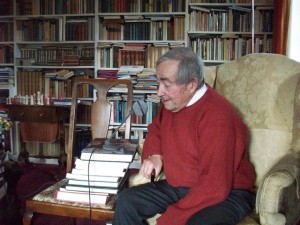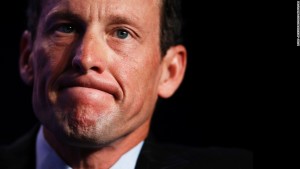St. Ignatius of Loyola died on this date 561 years ago. He did not set out at first to be a saint, but a soldier. Then Providence intervened. A cannonball shattered his leg, and as he was recovering from this terrible compound fracture, he underwent this remarkable experience:
He asked for some of these books [of knight-errantry] to pass the time. But no book of that sort could be found in the house; instead they gave him a life of Christ and a collection of the lives of the saints written in Spanish….When Ignatius reflected on worldly thoughts, he felt intense pleasure; but when he gave them up out of weariness, he felt dry and depressed. Yet when he thought of living the rigorous sort of life he knew the saints had lived, he not only experienced pleasure when he actually thought about it, but even after he dismissed these thoughts, he still experienced great joy. Yet he did not pay attention to this, nor did he appreciate it until one day, in a moment of insight, he began to marvel at the difference. Then he he understood his experience: thoughts of one kind left him sad, the others full of joy.
Ignatius’s circumstances didn’t change. His joy and sadness did not depend on the healing of his leg, or on his future prospects as a soldier and a dandy. In other words, our contentment in life, or lack thereof, is not, primarily, a function of the external circumstances of our lives. What determines the emotional shape of our lives (and therefore, that aspect of our lives that really matters!) is our thinking.
This profound insight of Saint Ignatius comports with ancient monastic wisdom, both in Christian and Buddhist forms. The difference between Christianity and Buddhism, in this regard at least, is that traditional Christianity does not aim at avoidance of suffering by the elimination of the ego. Rather, the Gospel allows the newly, intentionally reborn self [in the image of Christ] to embrace joyfully the suffering that comes from standing out to the full, which is to say, the suffering that comes with sainthood. Our suffering is embraced “for the sake of the joy that was set before” us [Hebrews 12: 2]. We do this by changing the way we think, by the “renewal of our minds [Romans 12: 2].” How is this done? By, among other things, faith in God’s promises.
This future-oriented, eschatological thinking finds yet another interesting corroboration in the insights of Jewish psychotherapists Viktor Frankl and Rabbi Edwin Friedman. Both men asked this question: “Why is it that, under experiences of extreme stress, some persons not only continue to function but even thrive?” It’s good to note that Frankl himself was a Holocaust survivor. Both men experienced quasi-Ignatian moments of insight. Frankl’s very language echoes the experience of Ignatius [my emphases in bold]:
Hiding his mouth behind his upturned collar, the [prisoner] marching next to me whispered suddenly: “If our wives could see us now! I do hope they are better off in their camps and don’t know what is happening to us.”
That brought thoughts of my own wife to mind. And as we stumbled on for miles, slipping on icy spots, supporting each other time and again, dragging one another up and onward, nothing was said, but we both knew: each of us was thinking of his wife. Occasionally I looked at the sky, where the stars were fading and the pink light of the morning was beginning to spread behind a dark bank of clouds. But my mind clung to my wife’s image, imagining it with an uncanny acuteness. I heard her answering me, saw her smile, her frank and encouraging look. Real or not, her look was then more luminous than the sun which was beginning to rise.
A thought transfixed me: for the first time in my life I saw the truth as it is set into song by so many poets, proclaimed as the final wisdom by so many thinkers. The truth – that love is the ultimate and the highest goal to which Man can aspire. Then I grasped the meaning of the greatest secret that human poetry and human thought and belief have to impart: The salvation of Man is through love and in love. I understood how a man who has nothing left in this world still may know bliss, be it only for a brief moment, in the contemplation of his beloved. In a position of utter desolation, when Man cannot express himself in positive action, when his only achievement may consist in enduring his sufferings in the right way – an honorable way – in such a position Man can, through loving contemplation of the image he carries of his beloved, achieve fulfillment. For the first time in my life I was able to understand the meaning of the words, “The angels are lost in perpetual contemplation of an infinite glory.”
Frankl and Friedman both challenge us to change our thoughts, to substitute thoughts of love, hope, purpose, and meaning for thoughts of hatred, anxiety, frustration, and resentment. I will be returning to Friedman, whose overall insights are especially counter-intuitive in our present world (which, from the perspective I’m adopting here makes them actually more persuasive). For today’s feast of Saint Ignatius, let me offer one more example of a change of thinking, this time a literary one. As Sam Gamgee and Frodo Baggins trudge their way through the soul-killing terror of Mordor, Sam experiences this moment of insight. It changes nothing of the external horror to which he and Frodo have been consigned. But it does something quieter, yet more radical. It changes Sam’s heart, and, in Tolkien’s story, this small, hidden change of heart changes the world.
There, peeping among the cloud-wrack above a dark tor high up in the mountains, Sam saw a white star twinkle for a while. The beauty of it smote his heart, as he looked up out of the forsaken land, and hope returned to him. For like a shaft, clear and cold, the thought pierced him that in the end the Shadow was only a small and passing thing: there was light and high beauty for ever beyond its reach. His song in the Tower had been defiance rather than hope; for then he was thinking of himself. Now, for a moment, his own fate, and even his master’s, ceased to trouble him. He crawled back into the brambles and laid himself by Frodo’s side, and putting away all fear he cast himself into a deep untroubled sleep.





